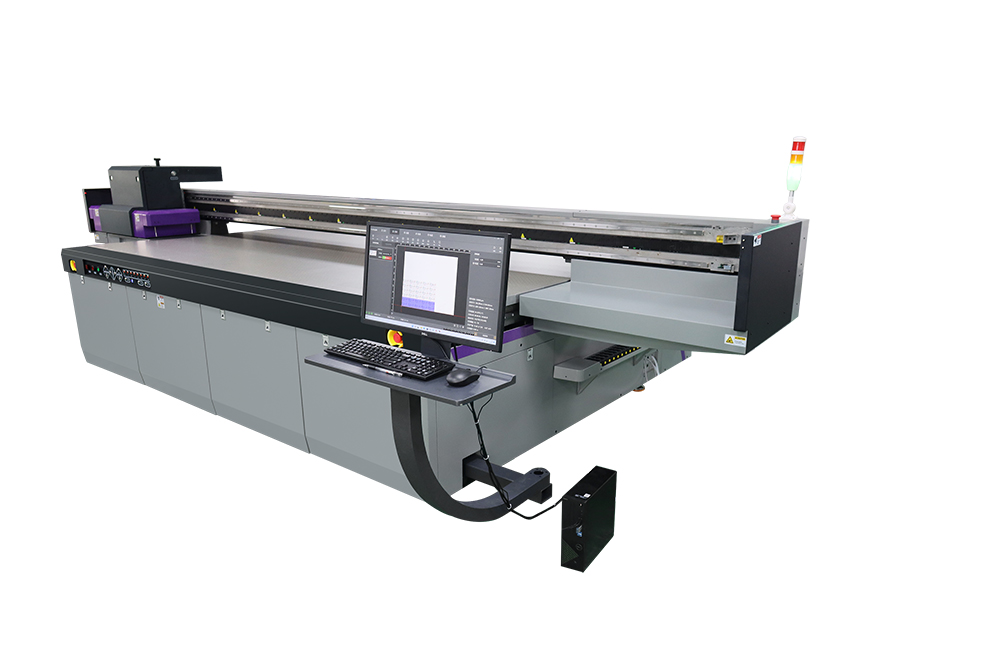A Guide to Buying a UV Flatbed Printer
A Guide to Buying a UV Flatbed Printer
In the realm of digital printing, UV flatbed printers have emerged as a versatile and efficient solution for producing high-quality prints on various materials. These printers utilize ultraviolet (UV) curing technology, which instantly dries the ink as it is applied, resulting in vibrant, durable prints that can withstand the test of time. Whether you’re a small business owner, a professional printer, or an artist looking to expand your creative horizons, investing in a UV flatbed printer can significantly enhance your printing capabilities. However, choosing the right machine requires careful consideration of several key factors. This guide will walk you through the essential aspects to consider when buying a UV flatbed printer.

1. Understanding UV Flatbed Printers
UV flatbed printers are designed to print directly onto flat surfaces, such as glass, metal, plastic, wood, and even certain fabrics. They use UV-curable inks that are cured (dried) immediately upon exposure to UV light, allowing for instant fixing of the ink to the substrate. This technology enables the printer to produce high-resolution images with sharp details and vibrant colors, making it ideal for applications where durability and resistance to fading are crucial.
2. Key Considerations Before Buying
2.1. Print Quality and Resolution
One of the primary considerations when purchasing a UV flatbed printer is its print quality and resolution. Look for printers that offer high DPI (dots per inch) capabilities, as this directly impacts the sharpness and clarity of your prints. For most applications, a printer with a resolution of at least 1200 DPI is recommended, but for more detailed work, you may want to consider models that go up to 2400 DPI or higher.
2.2. Print Speed
Print speed is another critical factor, especially if you’re planning to use the printer for high-volume production. Faster print speeds can significantly increase your productivity and reduce turnaround times. Consider the printer’s speed in terms of the number of prints it can produce per hour and ensure it aligns with your business needs.
2.3. Maximum Print Size
The maximum print size the printer can handle is also essential. Consider the largest items you plan to print on and ensure the printer’s bed size can accommodate them. Some printers offer expandable beds or modular designs that allow for larger prints, which could be a valuable feature if you anticipate working with varied sizes.
2.4. Ink Compatibility and Costs
UV inks can vary in quality and cost, so it’s important to consider both when choosing a printer. Look for printers that use high-quality inks known for their durability and color accuracy. Additionally, consider the cost per liter of ink and the printer’s ink consumption rate to estimate your long-term operating costs.
2.5. Build Quality and Durability
A UV flatbed printer is a significant investment, so it’s crucial to consider its build quality and durability. Look for printers made from robust materials that can withstand the demands of regular use. Check reviews and testimonials from other users to gauge the printer’s reliability over time.
2.6. Software and User Interface
The printer’s software and user interface play a pivotal role in ease of use and workflow efficiency. Look for printers that offer intuitive software with features like automatic color calibration, print preview, and job management tools. A well-designed user interface can significantly streamline your printing process and reduce the learning curve.
2.7. Warranty and Customer Support
Finally, consider the warranty offered by the manufacturer and their reputation for customer support. A good warranty can provide peace of mind, protecting your investment against unexpected issues. Similarly, responsive customer support can be invaluable when you need technical assistance or advice.
3. Popular UV Flatbed Printer Brands
Several brands dominate the UV flatbed printer market, each offering unique features and capabilities. Some of the most reputable brands include:
Roland DG: Known for its VersaUV series, Roland DG offers printers with exceptional print quality and durability.
Mimaki: Mimaki’s UV flatbed printers are praised for their versatility and high-speed printing capabilities.
Epson: Epson’s SureColor series includes UV flatbed printers designed for precision and reliability.
HP: HP’s UV flatbed printers are known for their advanced print technologies and efficient ink usage.
4. Conclusion
Investing in a UV flatbed printer is a decision that can significantly enhance your printing capabilities and expand your business opportunities. By carefully considering factors such as print quality, speed, maximum print size, ink compatibility, build quality, software features, and warranty support, you can make an informed choice that aligns with your specific needs and budget. Remember, while the initial investment may be substantial, the long-term benefits of owning a high-quality UV flatbed printer can far outweigh the costs, especially when it comes to producing professional-grade prints that stand the test of time.
